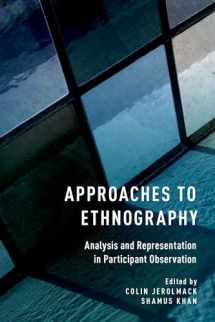
Approaches to Ethnography: Analysis and Representation in Participant Observation
Book details
Summary
Description
No ethnographer can record and analyze everything that she encounters in the field. We must make choices about what to look at and how to look at it, which means privileging some aspects of social life while bracketing others. Approaches to Ethnography enumerates the key analytic strategies-which Jerolmack and Khan call approaches-that ethnographers deploy to tame the buzzing confusion of the social world. The book identifies eight approaches that typify ethnography, which it groups and compares along four axes: 1) Micro, organizational, and macro; 2) people and places, and mechanisms; 3) dispositions and situations; and 4) reflexivity. Each approach, it is shown, enables the illumination of a distinct dimension of the social world.
Every chapter is written by a seasoned ethnographer who enumerates one of the approaches and reflects on how that approach shapes their field site selection, observations, and analysis. Taken as a whole, the chapters show how these approaches, which operate more like sensitizing devices than theoretical mandates, can play a greater role in guiding the kinds of questions that get asked and answered in the field than whether one adopts an inductive or deductive stance toward theory. Engaging, accessible, and often inspiring, Approaches to Ethnography offers a practical and novel way to teach, evaluate, and conceptualize ethnographic research.


We would LOVE it if you could help us and other readers by reviewing the book
Book review





